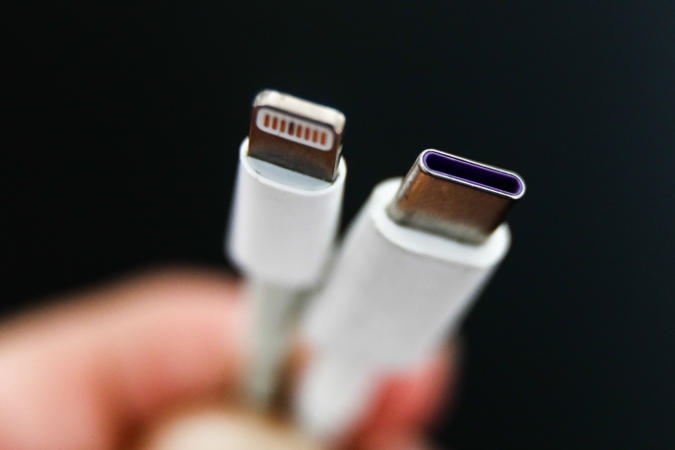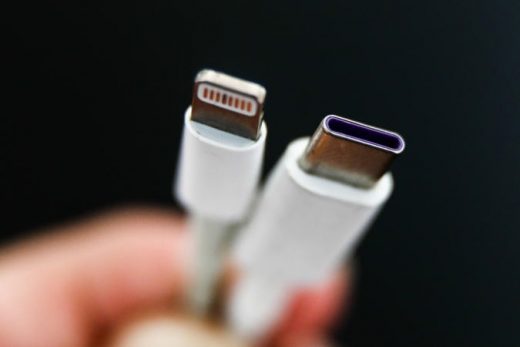EU reaches deal to make USB-C a common charger for most electronic devices
EU reaches deal to make USB-C a common charger for most electronic devices
Manufacturers have two years for mobile devices and 40 months for laptops to implement the rules.


Europe has reached a deal to make USB-C a common charger for all phones and electronic devices, with the aim to reduce e-waste and inconvenience with incompatible chargers. “Under the new rules, consumers will no longer need a different charging device and cable every time they purchase a new device, and can use one single charger for all of their small and medium-sized portable electronic devices,” the European Parliament said in a press release.
Buyers will also be able to choose whether they want to purchase new electronic equipment with or without a charger. “These new obligations will lead to more re-use of chargers and will help consumers save up to 250 million euro a year on unnecessary charger purchases,” the EU wrote.
Manufacturers have until autumn 2024 to implement the new rule, which covers “mobile phones, tablets, e-readers, earbuds, digital cameras, headphones and headsets, handheld videogame consoles and portable speakers.” They’ll have a bit longer to adapt the rule for laptops, up to 40 months after the rule goes into effect.
The EU has worked with the industry to reduce the number of mobile phone chargers from 30 to 3 over the last decade, it said last year. The biggest odd one out is Apple’s Lightning iPhone port that’s used by around 20 percent of devices sold in Europe. Apple has yet to respond to the legislation, but in 2020, said that the push for a universal phone charger would “stifle innovation.”
Another issue that’s not completely clear is how the EU wants manufacturers to handle different standards like DisplayPort for video. As for power delivery (PD), the EU simply said that “consumers will be provided with clear information on the charging characteristics of new devices, making it easier for them to see whether their existing chargers are compatible.” USB-C version 2.1 supports up to 240 watts of power delivery, up from 100 watts, but there’s no clear way to identify how much power a given cable can support.
The EU throws away 12,000 tons of chargers each year, many unused, according to Bloomberg. At the same time, consumers spend around 2.4 billion euros ($2.8 billion) on standalone chargers not included with devices. The new rules require formal approval the EU’s Parliament and Council, which won’t take place until after the summer recess. It’ll enter into force 20 days after it’s published in the EU Official Journal.
Europe has reached a deal to make USB-C a common charger for all phones and electronic devices, with the aim to reduce e-waste and inconvenience with incompatible chargers. “Under the new rules, consumers will no longer need a different charging device and cable every time they purchase a new device, and can use one single charger for all of their small and medium-sized portable electronic devices,” the European Parliament said in a press release.
Buyers will also be able to choose whether they want to purchase new electronic equipment with or without a charger. “These new obligations will lead to more re-use of chargers and will help consumers save up to 250 million euro a year on unnecessary charger purchases,” the EU wrote.
Manufacturers have until autumn 2024 to implement the new rule, which covers “mobile phones, tablets, e-readers, earbuds, digital cameras, headphones and headsets, handheld videogame consoles and portable speakers.” They’ll have a bit longer to adapt the rule for laptops, up to 40 months after the rule goes into effect.
We have reached a deal on the common charger! ????
??mobile phones, tablets, e-readers, digital cameras & more #USBtypeC
??harmonised fast-charging technology
??unbundling of sale of chargers from the sale of device?? Press conference at 12.30 CEST ?? https://t.co/TCBXxzIEdr pic.twitter.com/29JmeL0nxe
— IMCO Committee Press (@EP_SingleMarket) June 7, 2022
The EU has worked with the industry to reduce the number of mobile phone chargers from 30 to 3 over the last decade, it said last year. The biggest odd one out is Apple’s Lightning iPhone port that’s used by around 20 percent of devices sold in Europe. Apple has yet to respond to the legislation, but in 2020, said that the push for a universal phone charger would “stifle innovation.”
Another issue that’s not completely clear is how the EU wants manufacturers to handle different standards like DisplayPort for video. As for power delivery (PD), the EU simply said that “consumers will be provided with clear information on the charging characteristics of new devices, making it easier for them to see whether their existing chargers are compatible.” USB-C version 2.1 supports up to 240 watts of power delivery, up from 100 watts, but there’s no clear way to identify how much power a given cable can support.
The EU throws away 12,000 tons of chargers each year, many unused, according to Bloomberg. At the same time, consumers spend around 2.4 billion euros ($ 2.8 billion) on standalone chargers not included with devices. The new rules require formal approval the EU’s Parliament and Council, which won’t take place until after the summer recess. It’ll enter into force 20 days after it’s published in the EU Official Journal.
(68)


